On combining games, part 2: Chess and shogi
Go back to the main page Part 1: IntroductionPart 2: Chess and shogi
Now we've discussed the basics of what constitutes a game/chess-like/chess variant in the previous installment of this series (I hope), so let's get to more juicy parts in this one. The goal of this part is to explore how you could combine games, using the two chess variants of orthodox FIDE chess and shogi as a tool.
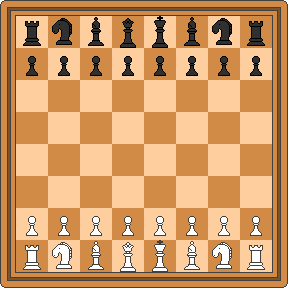 +
+ 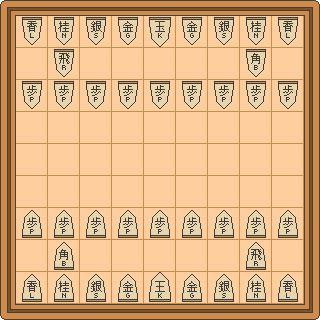 = ?
= ?Orthodox FIDE chess is one of the most popular chess-variants, played on an 8x8 board with six different types of pieces (Pawn-Knight-Bishop-Rook-Queen-King). As for why it's often called just "chess" that's a matter of linguistics, this is a text in English and the original English name for it (and it's predecessors, and cousins) were just "chess". Basically "Orthodox FIDE" are additional words to name a variant which otherwise goes without a unique name.
All the FIDE chess pieces are wooden (or sometimes metallic) 3D figurines. The two player's pieces are different colors, usually white and black, though its not uncommon for either of the "colors" to really be another color, such as brown or red.
Shogi is another chess variant (or really a family of variants, but we are talking about the main version), endemic to Japan. Unlike fide chess, the shogi pieces are flat "house shapes" (almost rectangles with a point to them), with the name of the piece written on them. The set of pieces is also different (Pawn-Lance-Knight-Silver General-Gold General-Bishop-Rook-King). The king pieces are the same in both games, and so is the goal of check-mate, moving one's pieces so that you would be guaranteed to "capture" the opponent's king your next turn, regardless of the opponent's moves.
Now, how do you combine two games? And how do you do it in a satisfying way? One trivial way is that of chess boxing, where parts boxing are switched out by parts FIDE chess (which I from now on will call just "chess" for brevity), and the winner is the one who wins in either games. If chess was combined with shogi this way, players would alternate between two boards, one identical to a normal chess board and the other identical to a normal shogi one, and the first to achieve a check-mate on either one would be crowned the winner. A slight variation of this is to play both games simultaneously, with no switching involved.
However, this is boring. For very incompatible games like chess and boxing, this is acceptable as only option. However for two games as similar as chess and shogi you would think there is a better way.
This question of how to combine games is also close to another of "which would win, game A or game B?", like in not which is the best game from a fun or artsy or innovative standpoint, but if you pitted the two games against one another, which would win? Of course, games can't be pitted against each other directly, but if you combined the two games, you could pit one player playing one game against another playing the other. This has actually been done before in a commercial setting, in Puyo Puyo Tetris (and its sequels), so we know it is doable at times, even producing something people would buy. So if you pit chess against shogi, how would that go?
Obviously, each player gets one side of the board, and one set of pieces, chess or shogi. They then move their pieces to put the opponent's king in check-mate. Easy enough? Yes and no, if we attempt we immediately run into a problem. If you're familiar with shogi, or have payed close notice to the article pictures, you know it already. Chess is played on a 8x8 board, but shogi on a 9x9 one. The shogi pieces won't fit in their usual configuration (known as the shogi "army") on a chess board, and if you put the chess army on a shogi board, there will be a gap on one of the sides.
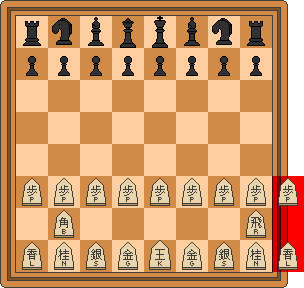
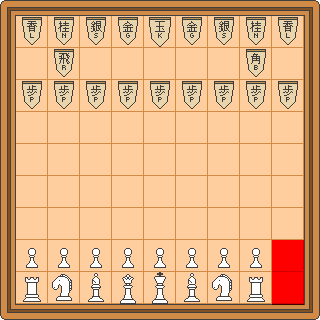
What do we do? If we subtract pieces from the shogi army, or add pieces to the chess army, their strengths will change and the pitting won't be fair. Here we are met with a kind of non-answer - because the environment (meaning the board) is not the same for the two games, we can't fairly pit them against each other, even if the pieces are similar. Because any change to the environment (or pieces) to make them fit in the same environment, will benefit either of the sides. We can still make assumptions that chess is the "stronger" game, because the pieces have objectively better movement options, but we can never have a 100% fair match.
So we have written off the idea of combining games by pitting them against one another, as the rules couldn't be fair. But really, even if the rule changes required to make them combinable wouldn't be fair, the rest wouldn't either. If either side was stronger then who would want to play the other side, knowing they are outmatched? There is merit in such handicap, but it is usually not what we are looking for. What if both sides play with both chess, and shogi pieces?
One option is to "just" mash the boards together, so that each player has a chess army next to a shogi army, facing the opponent's. We still get an irregular shape if we put a 8x8 board next to a 9x9 one, but if we add another row to the "chess side" making it 8x9, we can make it work. 8+9=17, so a wide 17x9 board for this new game.
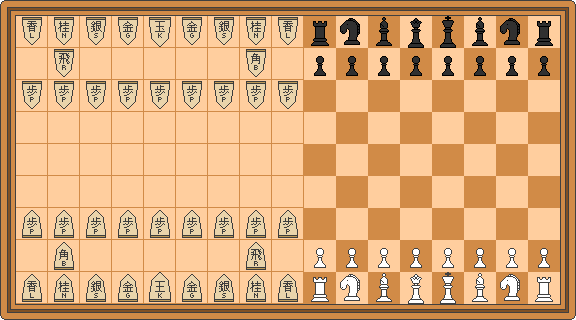
This would be a transgression if we were still worried about fair representation as we were when we tried pitting, but we aren't. We are concerned about the elements of the game (the pieces, the board, the armies) working similar to in their original game, while interacting with similar elements of the other game. In this case, the two boards and armies are literally combined, and the pieces are allowed to move between the boards, capturing another. The single combined board also needs to be similar to the original boards, in relation to the armies. For this reason, it needs to be a rectangle, and not a weird L-shape which would result from just combining a 8x8 with a 9x9 board (balance/fairness for the players also requires this).
Note that you need to make choices. Here, one aspect of the similarity of the armies with their original counterparts was prioritized: that each "sub-army" should be laid out the same way. However, this comes at the sacrifice of the board no longer a square, as in both original games, and the armies are strangely spread out, with stronger pieces towards the chess-side. If we choose to prioritize those factors instead, the board will look different. What about a 12x12 board? It has 144 squares, just one less than the 8x8 and 9x9 boards would have together. The "piece density" (the proportion of squares occupied by pieces at the start) is thus close to ideal.
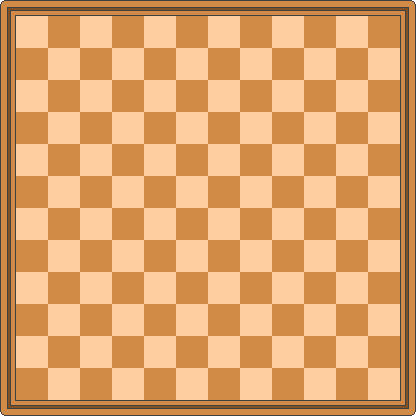
But how would we place pieces on this board?
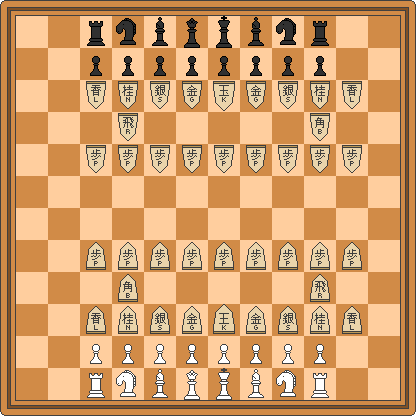
Above is an haphazard placement of the pieces, simply taking the whole armies and putting them down. It doesn't take much to realize this wouldn't play much like either game, as there isn't a united line of pawns, and the armies are unbalanced across the board. There are also some other points that become apparent viewing the above image. For one, the shogi army has an odd number of pawns and non-pawn pieces, so they can't be centered on a board with an even width (like 12). Another is that while the shogi armies and the chess armies are both symmetrical, they are symmetrical in different ways. The chess armies have a mirror symmetry, the two queens are placed on the same column, facing each other. The shogi armies, on the other hand, have a 180 degree rotational symmetry, the two rooks and bishops are placed diagonally across the board, so they are always on their player's left/right hand side. Why this is a problem is most clearly seen with the black player's shogi rook being able to move (and thus control) to two empty columns, while the white player's can only move to one.
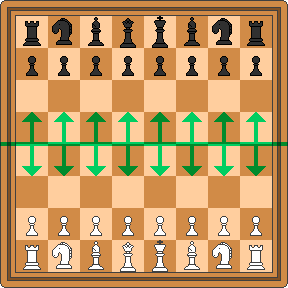
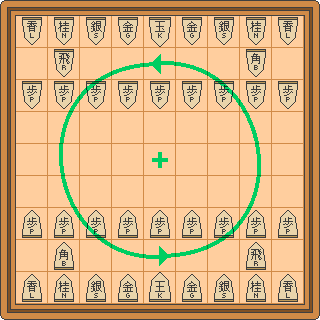
You can't have both symmetries at once, you have to choose, or let the game be unfair. Whichever solution you choose will mean favoring one game a little over the other. This symmetry problem is also shared by the 17x9 board, but the others are mostly new ones created by moving to a square board. No matter what solutions you go for, there will always be problems unique to them, ones you wouldn't have to deal with if you chose otherwise.
In conclusion, none of these solutions are objectively "better" than another, they all have trade-offs. When combining games, the real work is weighing these trade-offs, deciding which you want to make, and how to maximise the similarity of the parts you think are important. And, to be honest, combining games is not something you do for the sake of playing the game, you do it for the weighing. This is the fun part.
Even if we were to place pieces in a way we can be satisfied with, there are more aspects to this chess + shogi combination to be considered; promotion, castling, what to do with multiple kings, and dropping are all mechanics that could deserve their own articles - and who knows, maybe we will visit them in the future, but ultimately chess + shogi is a stepping stone, meant for an article to introduce some concepts, ways to combine games.
The following articles in this series will be like that too, exploring possibilities and boundaries, before moving on to a multi-article installation I'm really interested in. Well, hopefully I'll get that far, who knows. See you!
Originally written by Voliol 12022-02-20, HE.